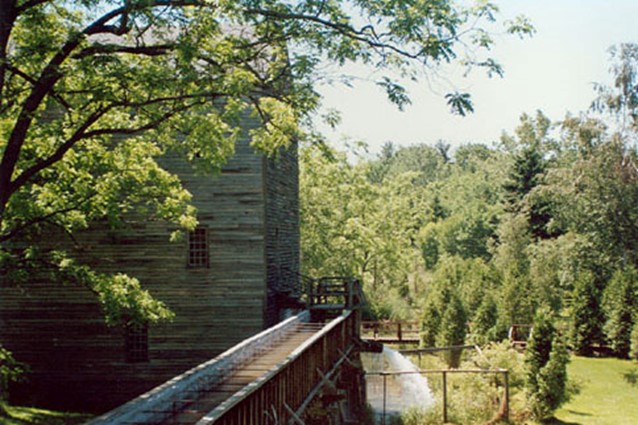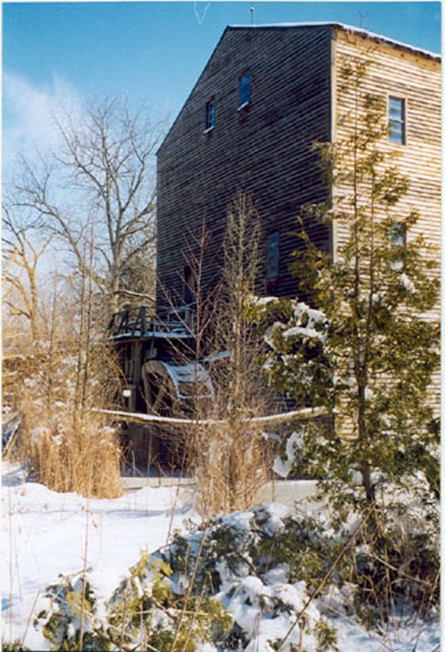
For the week of July 14, 2025.
On July 15, 1998, the Government of Canada designated the Backhouse Grist Mill in Port Rowan, Ontario, a national historic site. Built in 1799, the Backhouse Grist Mill was a small-scale, water-powered operation, typical of agricultural communities in Ontario between the late 18th and early 20th centuries. It exemplifies the changing technologies used in flour milling, which was one of the most important industries in Canadian history.
John Backhouse left England for the United States in the 1790s. He lived in New York and New Jersey before settling in the British colony of Upper Canada (now Ontario). There, around 1798, he received lots 16 and 17 of the Long Point Settlement in Walsingham Township. The lots are located on Between the Lakes Treaty (no. 3, 1792) territory, the traditional and treaty territory of the Mississauga Anishinaabe and Six Nations Haudenosaunee. Backhouse was an active member of the community, serving for example as Justice of the Peace after 1800 and as a major in the First Regiment of Norfolk Militia.
Backhouse erected a grist mill on his property. Local farmers brought their wheat to be ground here and the mill took its fee, often in flour. Many early mill owners operated at a loss and eventually failed, in part, because there was a lot of competition. Upper Canada (now Ontario) was the leading flour producer in British North America. American forces destroyed several mills in the region in the War of 1812 to cripple the Upper Canadian economy, but the Backhouse Grist Mill survived.
While no longer active, the Backhouse Grist Mill is one of the best-preserved examples of mill architecture and technology from the long history of milling in Canada. The three-and-a-half-storey mill has a gable roof, a heavy timber frame, and a rubble stone foundation. The Backhouse Grist Mill is equipped with machinery that represents the changes in milling technology, with millstone, wheelwork, conveyors, and elevators from the early 1800s, a turbine-powered roller mill from the 1880s, and a feed mill from the 1920s. While no longer used as a commercial enterprise, most of this technology is still operable.
The Backhouse (now Backus) family operated the mill until its sale to the Long Point Region Conservation Authority in 1956. The Backus land, including the mill, now forms part of the Backhouse Historic Site located at Backus Heritage Conservation Area. The remarkable survival of this late 18th-century mill speaks to its historical significance.
